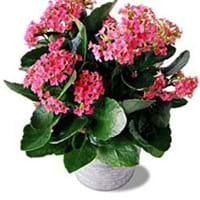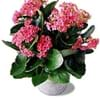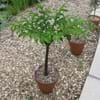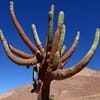Life Span
Annual or Biennial
Perennial
Type
Flowering Plants, Shrub
Flowering Plants, Fruits, Trees
Origin
Not Available
Central Asia
Types
Kalanchoe velutina, Kalanchoe hildebrantii
Aceymac apple, Bailey Sweet apple, Dabinett apple, Nehou apple
Habitat
Deciduous forests, Tropical regions
Hillside
USDA Hardiness Zone
Not Available
5-8
AHS Heat Zone
Not Available
9-1
Sunset Zone
Not Available
A1, A2, A3, 8, 9, 10, 11, 12, 13, 14, 15, 16, 17, 18, 19, 20, 21, 22, 23, 24
Habit
Not Available
Oval or Rounded
Minimum Height
Not Available
Minimum Width
Not Available
Flower Color
Not Available
White
Flower Color Modifier
Not Available
Not Available
Fruit Color
Not Available
Green, Red
Leaf Color in Spring
Not Available
Dark Green
Leaf Color in Summer
Not Available
Green
Leaf Color in Fall
Not Available
Brown, Green, Light Yellow
Leaf Color in Winter
Not Available
Not Available
Leaf Shape
Oval with toothed margin
Oblong
Plant Season
Not Available
Spring
Sunlight
Not Available
Full Sun, Partial shade
Growth Rate
Not Available
Medium
Type of Soil
Not Available
Loamy
The pH of Soil
Not Available
Neutral
Soil Drainage
Not Available
Well drained
Bloom Time
Not Available
Fall, Summer
Repeat Bloomer
Not Available
No
Tolerances
Not Available
Drought
Where to Plant?
Container, Ground
Ground
How to Plant?
From bulbs, Vegetative Reproduction
Grafting, Seedlings, Transplanting
Plant Maintenance
Medium
Medium
Watering Requirements
Keep ground moist
Medium
In Summer
Moderate
Lots of watering
In Spring
Moderate
Moderate
In Winter
Average Water
Average Water
Soil pH
Not Available
Neutral
Soil Type
Loamy, Well drained
Loamy
Soil Drainage Capacity
Not Available
Well drained
Sun Exposure
Not Available
Full Sun, Partial shade
Pruning
Prune for shortening long shoots, pruning needed for strong structure
Prune when plant is dormant, Remove dead or diseased plant parts
Fertilizers
slow-release fertilizers
All-Purpose Liquid Fertilizer
Pests and Diseases
Bacteria wilt, Crown gall, Mosaic viruses, Red blotch
Aphids, Canker, Caterpillars, Powdery mildew, Root rot
Plant Tolerance
Shade areas, Shallow soil
Drought
Flower Petal Number
Not Available
Single
Showy Fruit
Not Available
Yes
Edible Fruit
Not Available
Yes
Fragrant Flower
Not Available
Yes
Fragrant Fruit
Not Available
No
Fragrant Leaf
Not Available
No
Fragrant Bark/Stem
Not Available
No
Showy Foliage
Not Available
No
Showy Bark
Not Available
No
Foliage Texture
Bold
Medium
Foliage Sheen
Not Available
Matte
Invasive
Not Available
No
Self-Sowing
Not Available
Yes
Attracts
Bees, Butterflies
Birds
Allergy
breathing problems, sneezing
Mouth itching, Throat itching
Aesthetic Uses
Beautification, Bouquets
Not Used For Aesthetic Purpose
Beauty Benefits
For treating wrinkles, Improve skin tone
Not Available
Environmental Uses
Food for insects, Very little waste
Air purification
Medicinal Uses
Immunity, Inflammation, Jaundice, Kidney Stones, Neurodegenerative Disorders, Piles
Cancer, constipation, Diabetes, Diarrhea, Dysentry, Fever, Heart problems, Tooth ache
Part of Plant Used
Bark, Fruits
Fruits
Other Uses
Making Perfumes, Used as Ornamental plant
Used As Food, Wood is used for making furniture
Used As Indoor Plant
Yes
No
Used As Outdoor Plant
Yes
Yes
Garden Design
Not Available
Fruit / Fruit Tree, Shade Trees, Showy Tree
Botanical Name
KALANCHOE 'Mirabella'
Malus domestica
Common Name
Kalanchoe
Apple Tree
In Hindi
Kalanchoe
सेब का वृक्ष
In German
Kalanchoe
Apfelbaum
In French
Kalanchoe
Pommier
In Spanish
Kalanchoe
Manzano
In Portuguese
Kalanchoe
Macieira
In Polish
Kalanchoe
jabłoń
In Latin
Kalanchoe
Arbore
Phylum
Angiosperms
Magnoliophyta
Class
Magnoliopsida
Magnoliopsida
Family
Crassulaceae
Rosaceae
Clade
Angiosperms, Eudicots
Angiosperms, Eudicots, Rosids
Tribe
Not Available
Not Available
Subfamily
Not Available
Not Available
Number of Species
Not Available
Importance of Kalanchoe and Apple Tree
Want to have the most appropriate plant for your garden? You might want to know the importance of Kalanchoe and Apple Tree. Basically, these two plants vary in many aspects. Compare Kalanchoe and Apple Tree as they differ in many characteristics such as their life, care, benefits, facts, etc. Every gardener must at least have the slightest clue about the plants he wants to plant in his garden. Compare their benefits, which differ in many ways like facts and uses. The medicinal use of Kalanchoe is Immunity, Inflammation, Jaundice, Kidney Stones, Neurodegenerative Disorders and Piles whereas of Apple Tree is Cancer, constipation, Diabetes, Diarrhea, Dysentry, Fever, Heart problems and Tooth ache. Kalanchoe has beauty benefits as follows: For treating wrinkles and Improve skin tone while Apple Tree has beauty benefits as follows: For treating wrinkles and Improve skin tone.
Compare Facts of Kalanchoe vs Apple Tree
How to choose the best garden plant for your garden depending upon its facts? Here garden plant comparison will help you to solve this query. Compare the facts of Kalanchoe vs Apple Tree and know which one to choose. As garden plants have benefits and other uses, allergy is also a major drawback of plants for some people. Allergic reactions of Kalanchoe are breathing problems and sneezing whereas of Apple Tree have Mouth itching and Throat itching respectively. Having a fruit bearing plant in your garden can be a plus point of your garden. Kalanchoe has no showy fruits and Apple Tree has showy fruits. Also Kalanchoe is not flowering and Apple Tree is flowering. You can compare Kalanchoe and Apple Tree facts and facts of other plants too.





